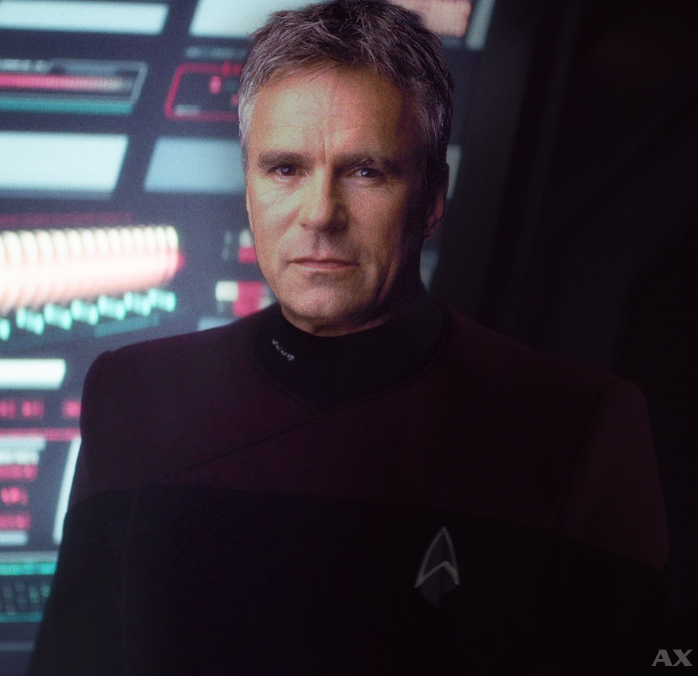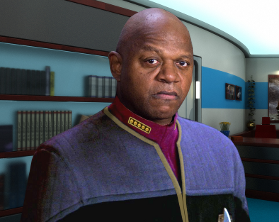Member Ranks
The following Rank Guidelines have been set forth as the path for new members to follow on their journey through the ranks of Bravo Fleet. Completing the activities indicated in each of the following steps will qualify a member for promotion. The purpose of these various items is to provide a solid base of knowledge for new members that will allow them to succeed in the future.
Overview
The rank system within Bravo Fleet was created to help foster interaction and involvement in the fleet from day one of joining. With increased activity and participation comes increased rank. Every member starts in the cadet ranks and then can quickly move up the echelons into the senior officer ranks within a few short months. Your path is yours to take as there are many options at each level, and the speed at which you ascend may be quicker or slower than others relative to your level of interaction.
The rank system is not meant to, and does not in practice, convey status or authority and should not be taken as such. However, think of your rank as more about you, the member. Rank is not a way to track authority, and Bravo Fleet isn’t a military; it is simply a way to reward our members who are active.
Cadet and Junior Officer Ranks
The cadet ranks are the beginning steps in Bravo Fleet. Sometimes referred to as the “checkbox ranks”, these ranks have a simplistic approach of doing X thing in order to fulfill the prerequisite for advancement to the next rank. Many of these requirements are simple activities which helps to acclimate a new member with Bravo Fleet. The cadet ranks have no time-in-grade (TIG) requirements. Additionally, the requirements are pointedly what is stated for the next rank, and therefore activity does “stack” in these ranks.
For instance, if a requirement is “Earn 2 Service Ribbons” that isn’t to say “Earn 2 Service Ribbons since your last promotion”. It just means earn 2 Service Ribbons in totality. If you already have 2 by the time you hit that rank, you’ll have fulfilled the requirement and quickly be on your way to the next rank. If a requirement is “Earn 5 Service Ribbons” and you used 2 Service Ribbons for a previous promotion, you’ll only need 3 more Service Ribbons in total to fulfill the requirement.
The junior officer ranks are largely a continuation of the cadet ranks in that they have a very set list of goals required for each rank. The junior officer ranks, however, require a small TIG for each rank. These TIGs are meant to allow new members time to soak in all of their experiences in BF and give them time to digest what they’re learning. Bravo Fleet is a big place, and there is a lot going on. It can be unintentionally overwhelming.
Once a member reaches the rank of lieutenant commander they are past the “checkbox ranks” and ready to move on to the senior officer ranks! Lieutenant Commander bridges that gap between the two, and is the rank where many features in Bravo Fleet are unlocked. At the rank of lieutenant commander, members will have the ability to request a primary command of their own to command. This ship will help you better interact with the storylines going on in Bravo Fleet at large, have a ship for competitions, and help boost your own dossier. At commander, members will have the ability to request a RPG (formerly referred to as a “sim”) of their own to run if they so choose.
Senior Officer & Admiralty Ranks
The senior officer ranks are the pivot in the ladder of Bravo Fleet. Achieving these ranks does not have a set number or list of accomplishments required to reach these ranks like the previous ranks did. However, these ranks are built on the idea that you’ll largely be doing the same activities as before. Activity is expected to be recent and consistent. For example, a member who has been a Commander for over a year but only returned to active status two months ago is unlikely to be promoted. Each rank going forward also requires exponentially more activity as the last.
Unlike the cadet and junior officer ranks, promotions at senior officer level and beyond also consume all activity once a promotion is granted. The next rank is a clean slate. This may not, however, count for something like a long term project that may have started during a previous rank, as long as that project is not mentioned in the last promotion recommendation.
Promotions beyond Lieutenant Commander are decided on a case-by-case basis. The Chief of Staff looks at the whole record of the prospective promotee including, but not limited to: competitions entered and hosted, writing contributions, gaming activity, academy activity, medals awarded and why, projects completed, leadership, and administrative experience. The latter two often hold a greater weight with each subsequent rank. Attitude and how one interacts with the larger organization also plays a role as it represents one’s growth and maturity in the club. Strive to establish your strengths and never be afraid to test your weaknesses.
The Chief of Staff may approve a promotion up to Commodore, but only the Bravo Fleet Commanding Officer can approve a promotion up to Admiral. Only persons currently or previously holding the position of Bravo Fleet Commanding Officer may hold the rank of Fleet Admiral.
There is no clean path toward a senior officer promotion, no absolute rules or expectations. Be active. If you want to know what you can do, speak to your unit leaders and ask to assist with projects. Apply for leadership positions, experience that is required for the senior officer & admiral ranks. Leadership is evaluated based on consistency and achievements.
If you are striving to earn Captain, look at other members who hold that rank as an example of how they earned it. Captain may be earned by sustained activity over a period of months, but a sub-unit leader will not earn Rear Admiral, which requires a wider impact on Bravo Fleet as a whole. Those who go the furthest are the ones who work together for the betterment of the group. The Chief of Staff encourages members to keep personal activity logs that can be shared with their leaders periodically. Leaders looking to submit an officer promotion are encouraged to first contact the Chief of Staff to determine the member’s eligibility while consulting the writing recommendations examples.
Leadership
Holding a leadership or administrative position in Bravo Fleet is an important achievement for a member, and it also serves as an important marker for evaluating member progress by the Chief of Staff. We do recognize that direct roleplaying game management, a historical staple of Bravo Fleet leadership in decades past, is not always possible, either through a lack of opportunity, or a desire to do something else. This will not adversely hamper a member’s chances for promotion.
There are other positioned and non-positioned activities that a member can engage in that are in keeping with the spirit of leadership. These include (but are not limited) to: working and actively contributing to the large-scale Bravo Fleet projects, sitting on a committee, and being a Mentor in the Bravo Fleet Mentorship Program. Further, all of the ranks and associated timelines are meant to show transparency in the Chief of Staff office’s thought processes. There is no guarantee that a member will be promoted upon hitting the number of days in a rank.
Recent Promotions
-


Jorvan Kael
Promoted to Ensign
-


Harold Matlack
Promoted to Lieutenant Commander
-


Jack Anderson
Promoted to Commander
-


Gucti Erin
Promoted to Midshipman
-


Oliver Tidwell
Promoted to Fleet Admiral
-


Ralen
Promoted to Midshipman
-


Erovan S'rrel
Promoted to Lieutenant Junior Grade
-


Jorvan Kael
Promoted to Midshipman
-


Aloran
Promoted to Commander
-


Erovan S'rrel
Promoted to Ensign

 Bravo Fleet
Bravo Fleet























